 Washington Trails
Association
Washington Trails
Association
Trails for everyone, forever
Lincoln High School in Tacoma is proving the hypothesis that an outdoors science program can deliver on STEM, help students dream big and break down geographic, economic and social barriers to the outdoors. | by MJ Sampang
The end of any school year can be as hectic as its beginning, full of celebrations and reflections on the past year before summer plans take over. Educators and administrators assess what to carry forward into the coming year to serve the needs of their students. As the 2023-2024 school year draws to a close, one Tacoma public high school has something unique to celebrate: the successful second year of a program that takes high school students out on science-based outdoor adventures.
 Lincoln High School students on an overnight trip at Mount Rainier Institute. Photo by Natalie Reszka.
Lincoln High School students on an overnight trip at Mount Rainier Institute. Photo by Natalie Reszka.
Tacoma’s Lincoln High School just wrapped up its second year of programming for their Science Outdoors program. The program, led by Natalie Reszka, National Board Certified teacher and an AP Biology and AP Environmental Science teacher, oversaw strong growth over its inaugural year, including recruiting more teachers.
As she grows the program, Natalie wants other science teachers to help her in making a successful program filled with field trips to various places in the beautiful Washington wilderness.
“I couldn't sign up fast enough,” said Lincoln High School Chemistry and Physics Teacher, Elainea Kesler-Horan. “In my first year at Lincoln, I somewhat expected it to be like most high schools I had worked at in my eight years of teaching—go to work, teach and mold minds, go home. That changed when Natalie Reszka told me about the LHS Science Outdoors Program.” Both teachers are leaders and champions for the goals and accomplishments of the program; most importantly they make a stellar team.
This year the Lincoln High School Science Outdoors program served a total of 378 students 9th to 12th grade. Lincoln science teachers strongly encourage students to register for an outdoor trip. Natalie emphasizes the importance of sharing this program with all students.
“Some students who haven’t gone on a trip yet might get a chance to fill out paperwork. This is why our demographic distribution of our students in the program mirrors our hallways and our school's demographics. Every student has an equal chance to go — no behavior recommendations, no grade limits, no anything. This is a huge piece of our program because many field trip-type programs usually have a barrier to access, such as a GPA or signatures from teachers that give them permission to miss class. We usually have students who go on these trips who are not your best students ... and then they find a new connection to education that they hadn't experienced before.”
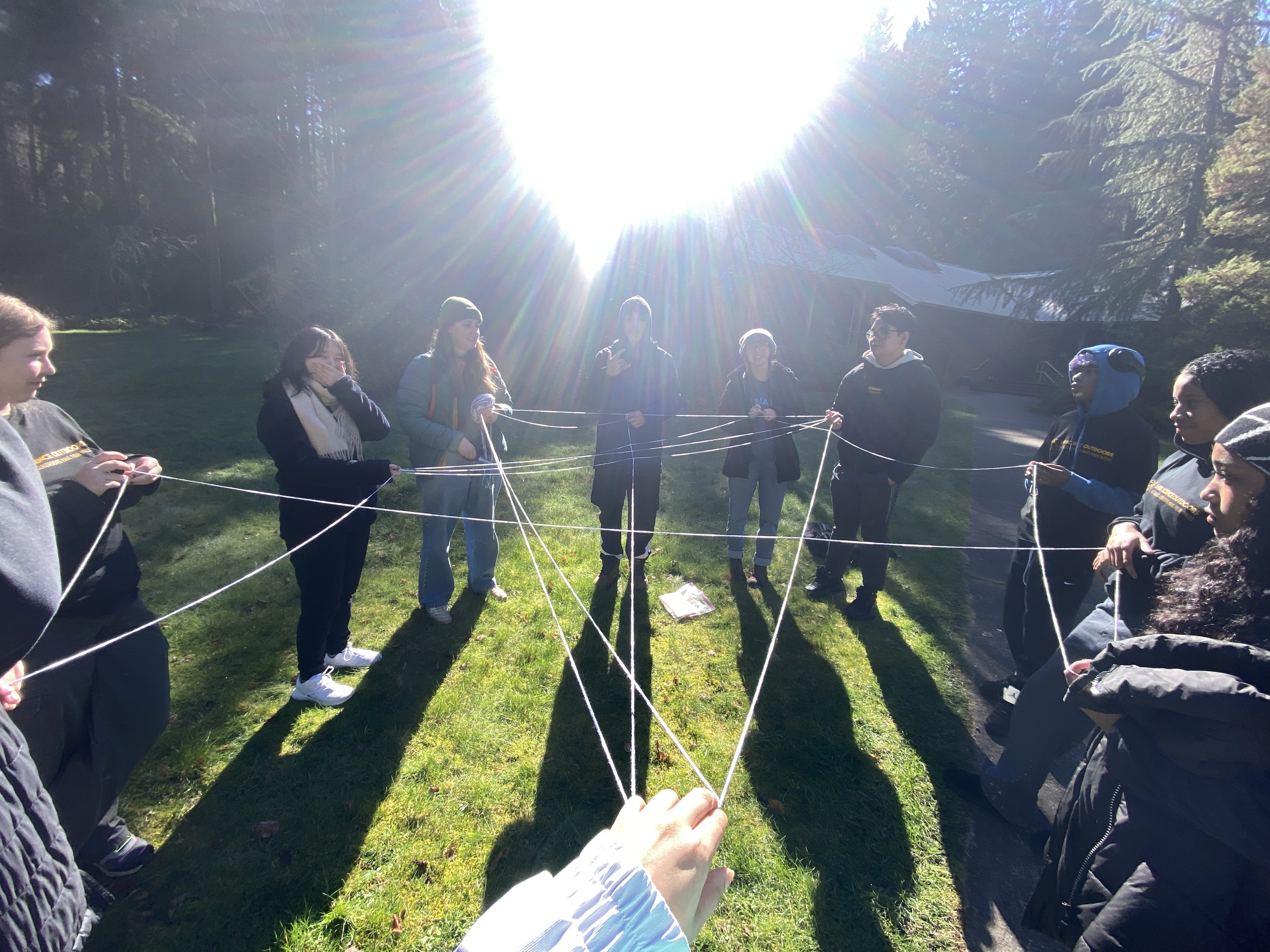 Lincoln High School students in an activity at Mount Rainier Institute. Photo by Natalie Reszka
Lincoln High School students in an activity at Mount Rainier Institute. Photo by Natalie Reszka
The program is funded by an Office of Superintendent of Public Instruction (OSPI) Outdoors for All grant that Natalie applied for. Washington Trails Association's Outdoor Leadership Training program also supports the program.
“The other support we needed was gear!!” said Natalie. “Our students are not used to being outdoors for extended periods of time—we need good gear for students to have less of a barrier to access to the outdoors.”
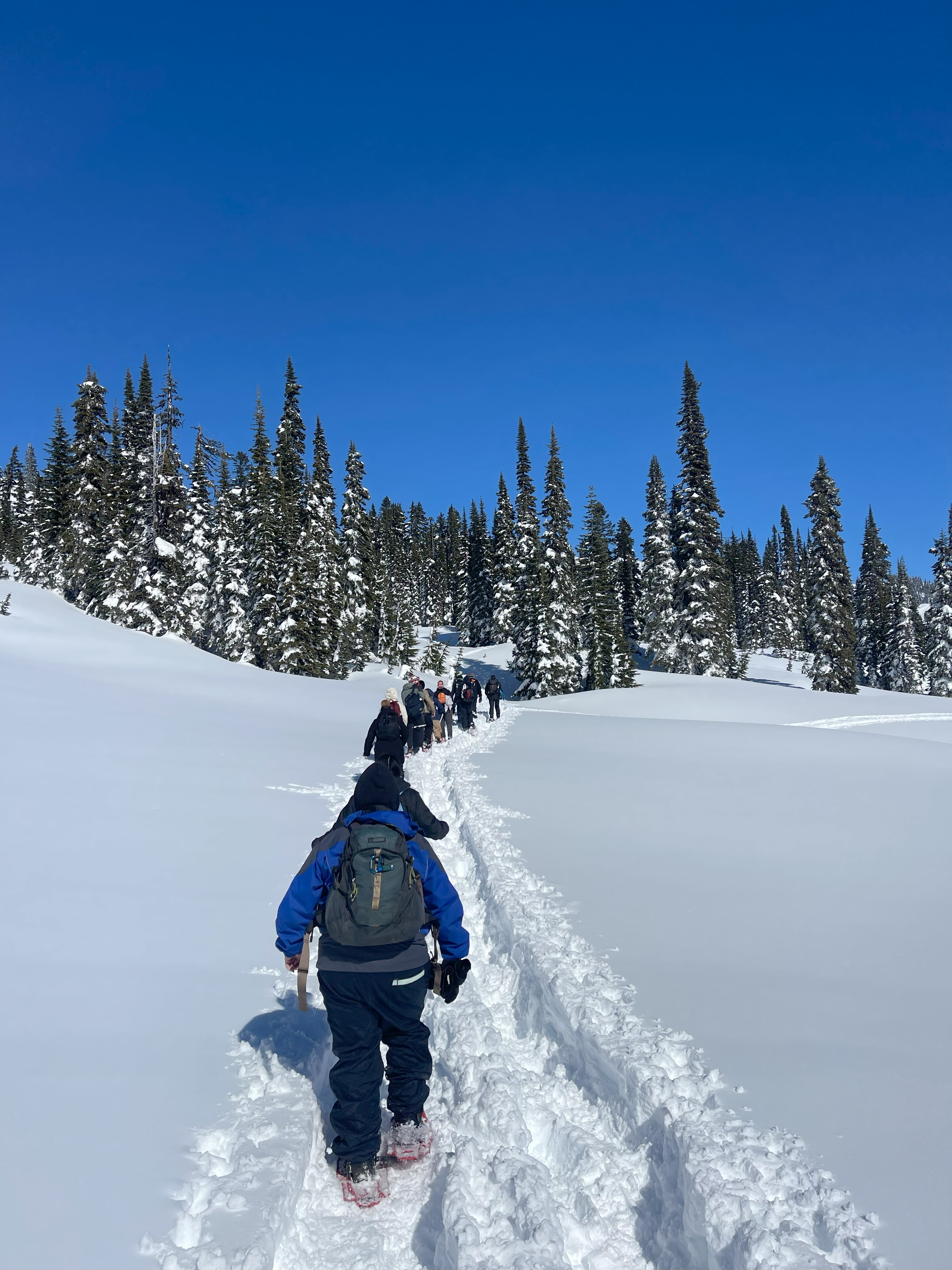 Many students may not have all the gear needed to try new activities like camping or snowshoeing. Even good rain gear or hiking boots can be a barrier. WTA's gear libraries allow educators to check out everything from boots to backpacks, tents to snowshoes. This year, the Lincoln students had an opportunity to learn and play in the snow. Photo by Natalie Reszka
Many students may not have all the gear needed to try new activities like camping or snowshoeing. Even good rain gear or hiking boots can be a barrier. WTA's gear libraries allow educators to check out everything from boots to backpacks, tents to snowshoes. This year, the Lincoln students had an opportunity to learn and play in the snow. Photo by Natalie Reszka
“Through the WTA partnership, we were able to not only attend many incredible trips, but also ensure that all students felt comfortable to try new things!” Elainea added.
Another form of support this year came from Mount Rainier Institute. Natalie signed a grant for a two-year agreement to have Lincoln attend the institute both years. It was a big win for the LHS Science Outdoors Program, allowing them to offer a multi-night overnight experience for the first time! With thoughtful planning, Natalie and Elainea were able to get a full group of 55 students out to Mount Rainier Institute.
Mount Rainier Institute’s program provides an excellent learning experience for many students in Washington.
“The overnight trip in particular was a first for many of our students” said Natalie. “This opportunity allowed students to get a certificate of completion through the University of Washington Forestry Sciences Department.”
This trip was also important because many of Lincoln's underrepresented students in Science, Technology, Engineering, and Mathematics (STEM) had a chance to experience field work and the life of someone in STEM and Forestry.
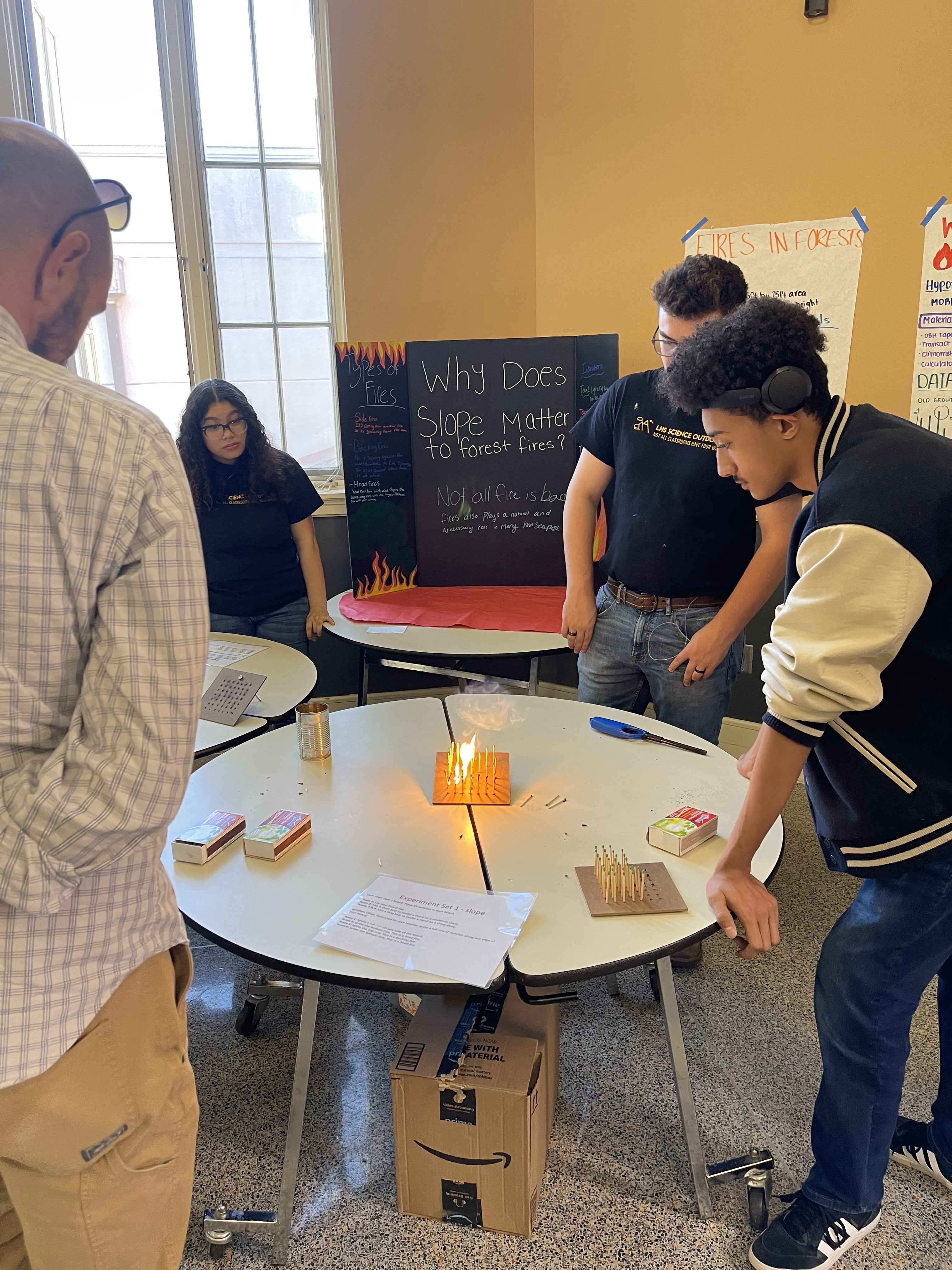 Hands-on lessons on forest health and wildfire management get folded into classroom lessons and end-of-year student projects. Photo by Natalie Reszka
Hands-on lessons on forest health and wildfire management get folded into classroom lessons and end-of-year student projects. Photo by Natalie Reszka
Through this experience, 12% of students who went gained a new interest in a possible STEM career—forestry, outdoor education, astronomy, medicine (plants), and more. Mount Rainier Institute’s goal is to have students gain knowledge about climate science data collection and field survey experience. Through this goal, most students were in Advanced Placement (AP) Environmental Science, so the goal was connections to measuring carbon sequestration and also forest fire risk assessment, which are both topics in AP Environmental Science.
This kind of experience can even inspire teachers.

Lincoln High School Chemistry and Physics Teacher, Elainea Kesler-Horan. Photo by Natalie Reszka
“It showed me that I was capable of more than I gave myself credit for,” said Elainea about the overnight trip. “I often downplay my role as an educator. In reality, seeing someone experience the beauty of the Cascade mountains or going through a grueling hike to reach a beautiful summit for the first time is a priceless experience. It is why I teach—to help change lives.”
The dynamics of learning in a real time outdoor environment to applying to science based curriculum is transformative for students. "We have never had the chance, or even choice to go into nature like this before," reflected one student at the end of the year.
At the end of the school year, the Lincoln High School Science Outdoors program hosts a symposium to share the experiences, highlights, accomplishments and art from the program year. One student who attended the Mount Rainier Institute trip gave a speech reflecting on her experience:
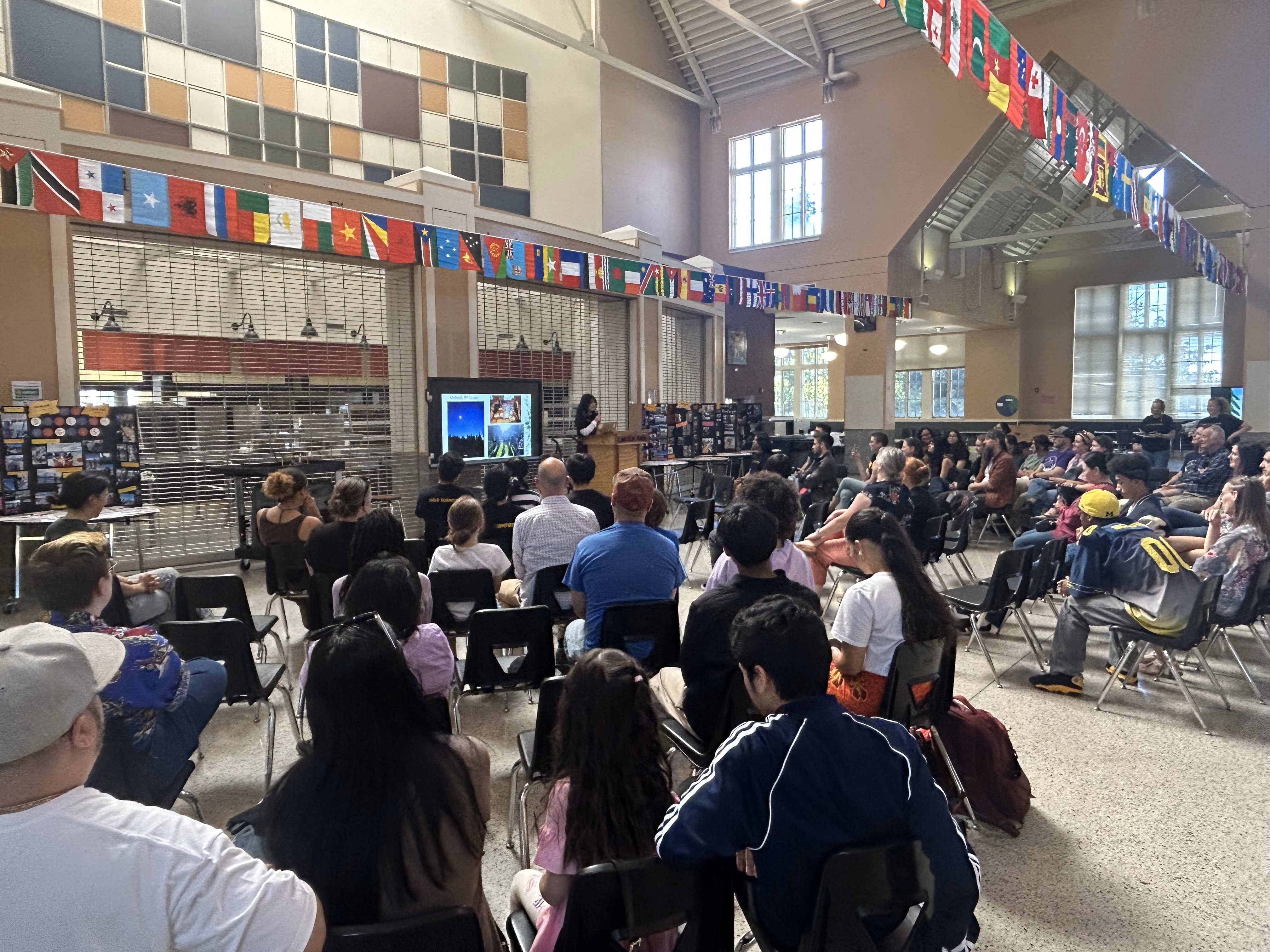 Students speak at the Lincoln High School symposium. Photo by Natalie Reszka
Students speak at the Lincoln High School symposium. Photo by Natalie Reszka
“Disproportionately, people like me who grew up in Tacoma are affected by nature deprivation. The idea coined by Richard Louv, defined how the benefits and destruction of nature are unequally distributed amongst communities, primarily based on racial circumstances from redlining to being lower income. 76% of people who are low-income racial minorities live in nature-deprived areas, and most of the time due to them living in urban areas, going out to forest or national parks is simply inaccessible and not financially possible. Now take this circumstance, and apply it to Tacoma. This means out of the district’s 29,000 enrolled students, about 20% are economically disadvantaged, meaning roughly 4,000 students in our district thus far, have never gotten the chance to experience the outdoors, beyond grass ridden lawns, the bare-bone trees we have lining our streets.”
Over the two-year span the program has provided over 800 opportunities to students for outdoor learning. “That is more than 50% of our LHS population!” reports Natalie, clearly proud. “Sixty-five students went on their first school field trip and 36 students went on an overnight trip for their first time. In year 1 of the program, there were only 322 9th grade students who enrolled, whereas the 2023-2024 school year increased to 378 students across 9th to 12 grade with 2 additional overnight trips. Every trip had an increase in STEM career interest (+19% average) and every trip had an increase in confidence in the outdoors (+23% average).”
The student experiences mirror those numbers. “Before, I was already interested in a STEM career,” reflected one student. “But I was intimidated because I had no idea what you do. These trips transformed me to be experienced in the science field. I understand the process of science and the point of making a hypothesis and testing that now. I no longer feel intimidated in entering the science field. I belong in STEM.”
 A student project on carbon sequestration carries more meaning after hands-on outdoor experiences. Photo by Natalie Reszka
A student project on carbon sequestration carries more meaning after hands-on outdoor experiences. Photo by Natalie Reszka
Natalie said she has learned that providing opportunities and gear can really create huge identity, confidence, and life choice shifts for students who would have never considered those ideas before. Elainea said that on trips and during the program year, students were bonding with students outside of their social groups, from different racial and ethnic backgrounds, cultures, socioeconomic statuses and identities.
“These bonds didn't diminish upon returning to school, either. Students came to support other friends they made while at 'camp' at the science symposium, even if they weren't presenting. Students were able to see teachers as human beings, too. We laughed together, helped each other, overcame challenges together. We were able to see that all of us, young and old alike, experience the same things in different ways.”
The Lincoln High School Science Outdoors program is more than a program created by motivated teachers who see the importance of incorporating outdoor experiences into a strong education for their high school students. Through community partnership, supportive learning and breaking down barriers to outdoor spaces, it’s a program that brings multiple types of outdoor learning experiences to underrepresented high school students who otherwise would not have the opportunity in their school year to enjoy them.
The Lincoln science teachers have already provided outdoor science opportunities to over 800 students at the school—over half of the student body—and they are just getting started. This summer, they’re honing their own skills as outdoor educators: joining a Backpacking 101 journey with Sahale Outdoors in the summer and possible future training/certification through Tacoma Nature Center. They hope that this program continuously instills confidence and excitement for Lincoln students to see more of themselves outdoors while learning together.
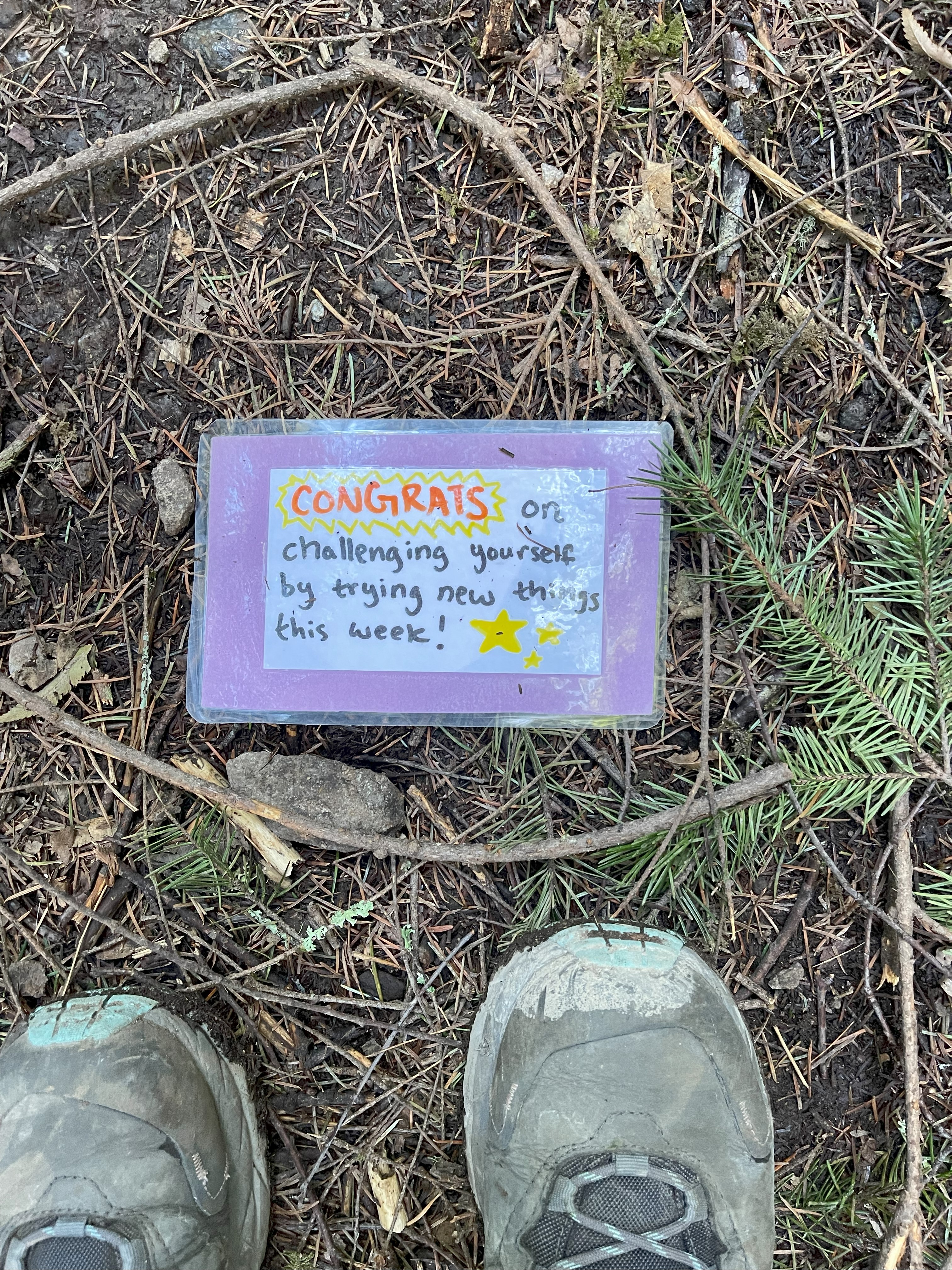 Challenge and growth are part of outdoor education experience. Photo taken on a Mount Rainier Institute outing by Natalie Reszka.
Challenge and growth are part of outdoor education experience. Photo taken on a Mount Rainier Institute outing by Natalie Reszka.